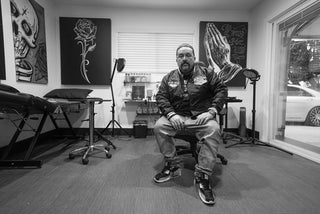Los Angeles in 1969 was not unlike L.A. in 2018. The nation was seething with civil unrest, the political landscape was barbed, and culture was dynamically shifting around Woodstock, the birth of punk, and the Manson murders. It was in this climate, on this year, that Mark Machado was born in a downtown Los Angeles hospital. The Mexican-American son of a lithographer grew up in his father’s print shop, surrounded by Heidelbergs churning out posters for everyone from neighborhood restaurants to James Brown. He was a product of his environment: car culture, soul music, and street art. As a child, he drew on phonebooks, his mother’s work pamphlets, on the wall... He was intrigued by—fittingly—Blondie’s “Rapture” music video and the presence of graffiti. In his South Bay hometown, the harbor was largely painted with gang writing. But every once in a while, he’d catch the renderings of Dream, a Samoan kid from Carson, on the buildings. Bored at his dad’s workplace, Mark would gaze out the window and spot Clever scaling the rooftops. This, coupled with his infatuation with a nascent hip-hop culture, drove the young artist deeper into the realm of graffiti.

But, his dad had other plans for the boy who would one day become one of the world’s most prolific street and tattoo artists: Karate school.
Deep in the valley, Mark Machado, better known as Mister Cartoon, leans back in his studio chair. I always imagine the life of a tattoo artist to be hard—on the eyes, the hands, and the back. But, Mister Cartoon’s stout architecture is built for huddled, meticulous handiwork. Nearing fifty, he’s a little older and grayer now; his storytelling cadence has unfurled over time. Sometimes, I wonder if he exists outside of this place. I’ll catch Toons cruising the boulevard in one of his glossy lowriders, but I’ve never really carried much of a conversation with him outside his sanctuary. I know he’s a loving dad and husband, I just can’t visualize Mister Cartoon beyond the sharp smell of ink, the whir of the drill, and the fine black-and-grey lines.
So, back to the story of Toons’ dad stuffing the young artist into... martial arts?
“He just came home one day....” “He goes, ‘Good news, son!’ I go, ‘What’s that, dad?’ He goes, ‘I signed you up for karate.’ I go, ‘But, I don’t want to do karate.’ He goes, ‘You’re doing it.’ And I was doing it. He goes, ‘I paid for it already. I print the diplomas, the black belt diplomas, the yellow, the orange belt. Look at the diploma, I got one right here.’”
Aside from having printed it himself, there was good reason for why Toon’s dad wanted him to consider the karate diplomas. There was a dragon illustration on the right side of the document, paired with a tiger on the left. The characters were hand-stippled with pen and ink.
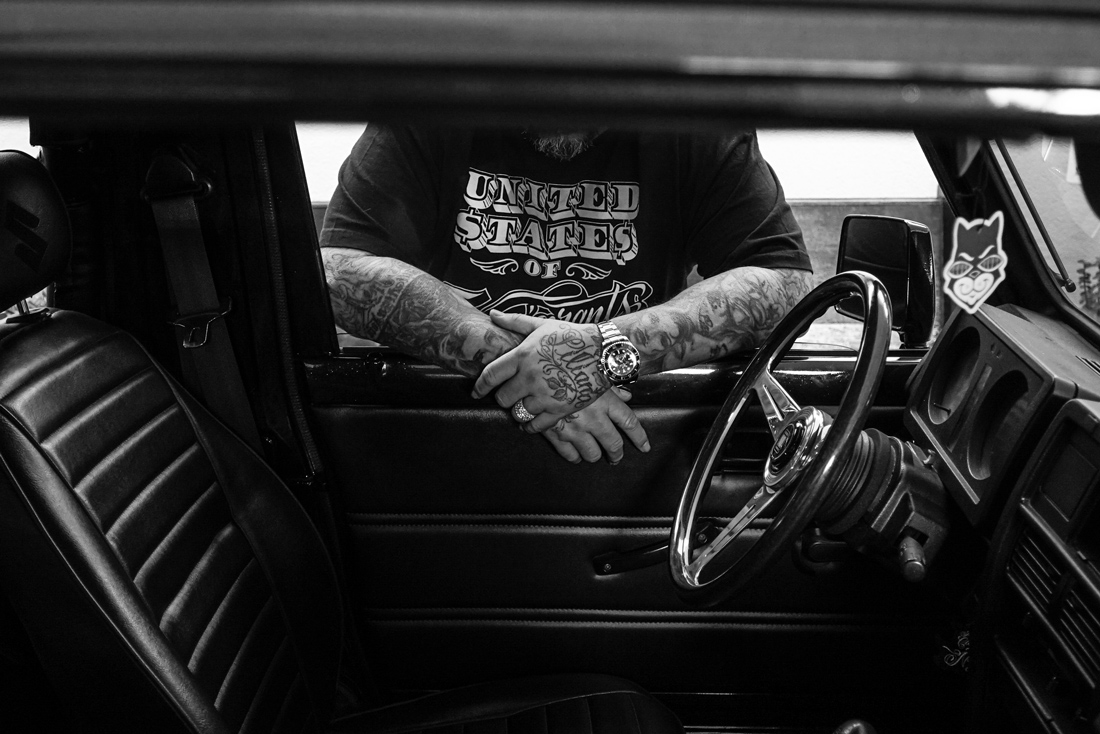
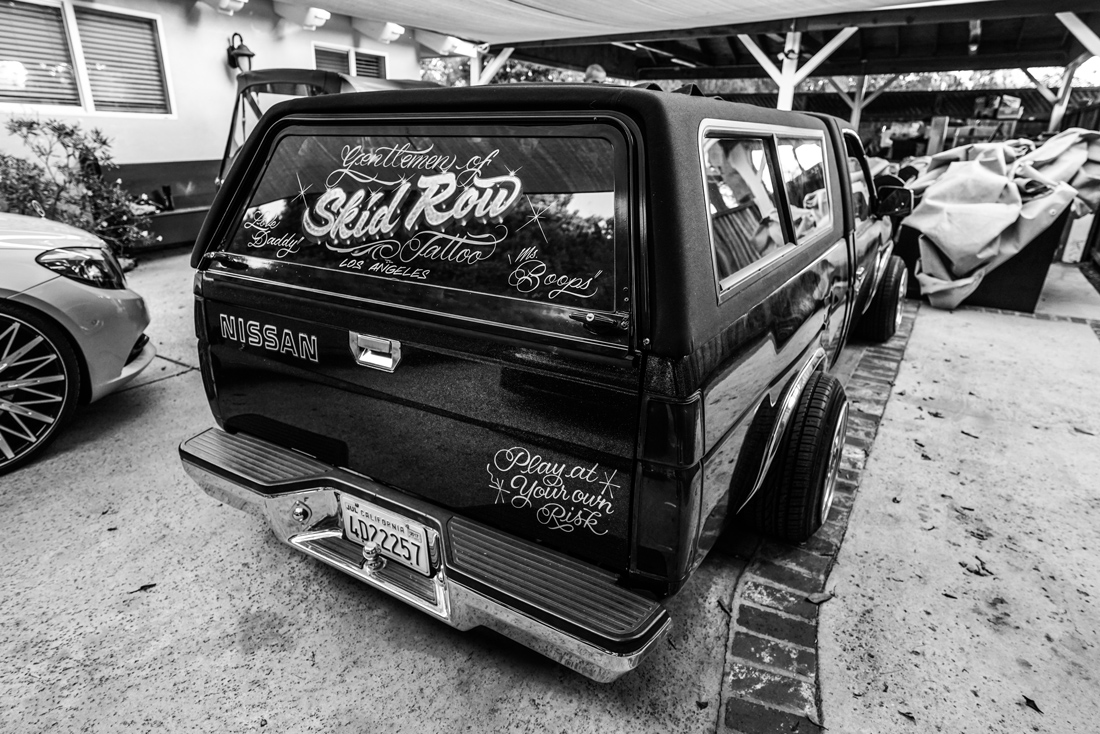
“I go, ‘Oh shit!’ Like, it was this badass hand style and someone had lettered calligraphy with the lettering, you know... [My dad] goes, ‘Wait ‘til you see the school, you’ll change your mind.’ He walks me in the school, the whole walls are airbrushed in candy of dragons fighting fucking samurais and the rock hills with waterfalls with faces in the rocks and broads in there like Frazetta meets Boris meets Kung-Fu Theater.”
As it turns out, the master of the dojo, a half-Asian Vietnam vet wracked with PTSD—Ron Tess—was also a first-rate artist. Mark’s dad would drop his son off at the shop, less to learn karate, and more to funnel his artistic talents into airbrushing. Under Ron’s spell, Mark invested in an airbrush kit at the age of sixteen.
“And one night I get it. One night, I forget I’m pushing out and pulling back and I just start drawing.”
“[Ron] gave me, like, a 30-minute lesson. He was like, ‘Look, don’t be stupid. This is how you do it. You just put the ink in here, pull back the thing, you know...’ He’d been doing it for 30 years. It’s the hardest shit. Right? So he’s just, ‘Look, so it’s common sense, just do it! Figure it out.’ He made it look so fucking easy, right? I get home, I’m all thumbs, it don’t work. The paint is not behaving. I can’t get this shit working. It takes me about a year to fuck with it off and on. Finally, I start to get a little bit of a flow. I start taking it apart, putting it back together. And one night I get it. One night, I forget I’m pushing out and pulling back and I just start drawing.”
Toons ran excitedly to his dad, sharing the good news of having reined in the airbrush. But, once again, his dad had other plans. “He was like, ‘Look, son, I love you, you’re a good kid, but it’s time to get a real job.’ And I was like, ‘Hmm, what does that mean?’ No, I don’t want to work in that print shop. I’m not going to go get a job-job, labor job. I’m way too lazy for that shit. But I do get motivated when I airbrush those T-shirts. So, I go, ‘Pops, look, we can get a 10×10 booth, table, I’ll paint this black banner, we’ll go to The Roadium [swap meet], I’ll airbrush T-shirts...’ I made a thousand dollars the first day. I was doing Joe’s Plumbing, Joe Loves Lisa, Lisa Loves Joe, you know, Group Car Club [plaque]. Fucking ‘Harbor Area’ script on the back, whatever anybody came with. And being that I was a little weird, I could draw weird shit. Like if some Crips came up, if they wanted fucking ‘Hoover Crips’ on the back, I would write that shit in Old English and put Crips with the Jheri curl and a fucking corduroy cap and cuffs on the bottom. They would come back and flip out that I was able to do those little weird details because I people watch. I study people, I study that little shit, how they stand, you know all their posture and all that...”
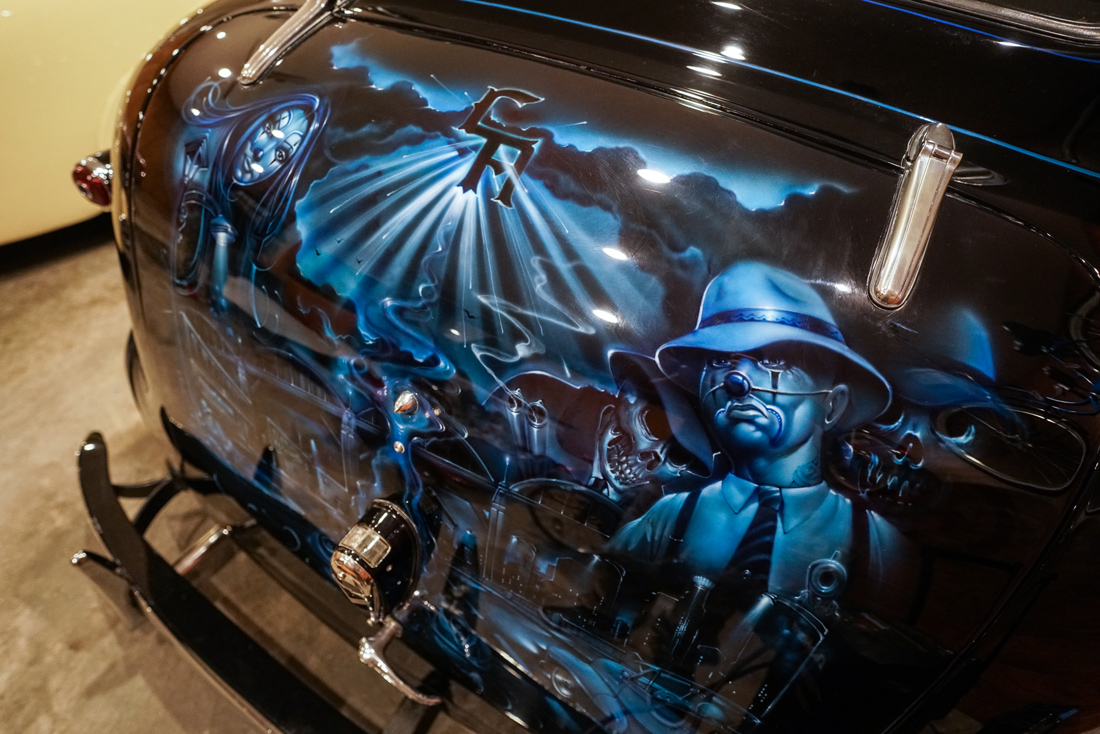
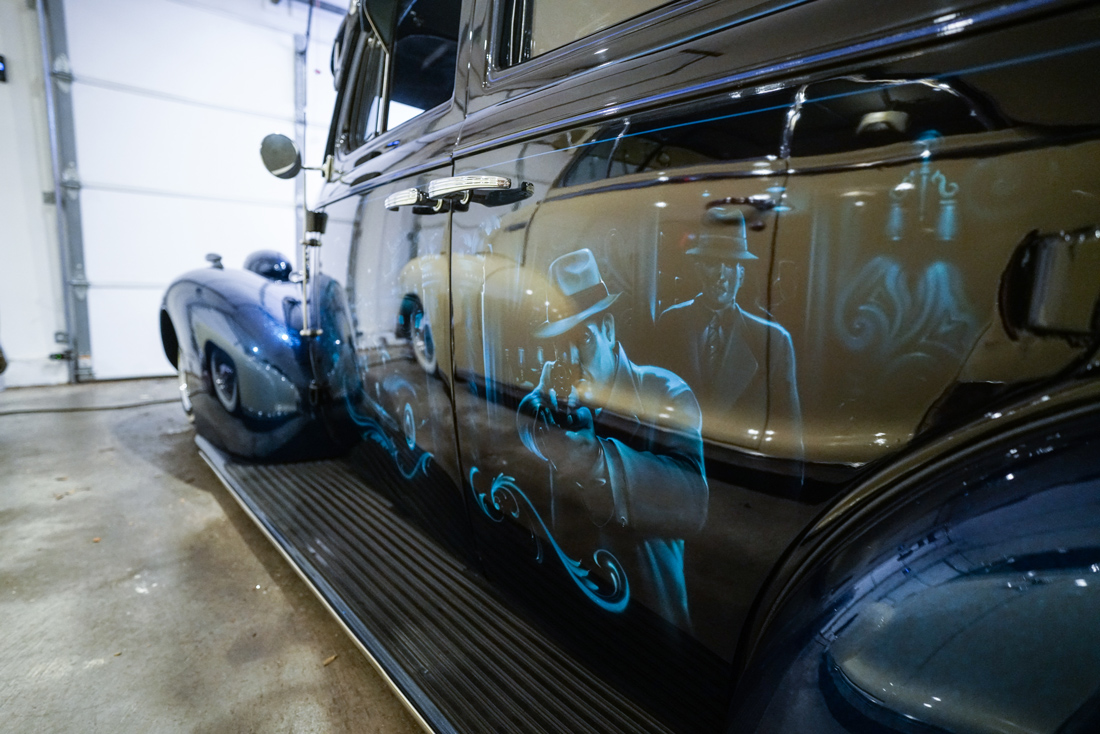
The airbrushing business was a runaway success, so his dad suggested he find a partner to carry the load. There was this one kid Toons had met at the Hawthorne Mall named Abel. Another legend in the making, he would later be known as the one and only OG Abel.
“I went to his pad, knocked on his door and I go, ‘Bro, I need you to help me airbrush these shirts.’ He goes, ‘I don’t know how to airbrush.’ I go, ‘You’ll figure it out. I’ll show you.’ I spent about 10 minutes with him. Created a monster. Motherfucker just never looked back and just was the illest artist after that shit. I was like, ‘Look, homes, pour the paint here, push down, pull back. The closer you go, the sharper the line, the farther you pull back, the line gets wider.’ He goes and practices for a little, I was like, ‘Oh shit!’ Maybe I need to break this motherfucker’s fingers and shit. And we just, you know, we came up together, man. We helped each other, we learned off each other. And now he’s a fucking world-renowned artist.”
“They would come back and flip out that I was able to do those little weird details because I people watch. I study people, I study that little shit.”
There were a lot of talented Latino/Chicano artists coming up in LA in the ‘90s, and it’s crazy, in hindsight, how they all aligned and worked together to hold the spotlight. When Toons started delving into tattoo culture, he linked with Estevan Oriol, son of the esteemed photographer Eriberto Oriol, who was attracting a name for himself in the picture-taking sphere. Mister Cartoon and Estevan Oriol proved that the whole is greater than the sum of its parts. Together, they crashed the celebrity rap party, touring with budding artists, infiltrating Japanese hip-hop culture, and eventually working their way up to the top dogs of the era like 50 Cent and Eminem.
“[Estevan] was road managing a little band called House of Pain, whose first album was ready to drop. Estevan went on tour and I went to Tokyo for my first time and we had met at a record release party for logos I had did for Eazy-E (he also had a group with DJ Quik called Penthouse Players and I did the album cover). And [Estevan and I] met at that record release party. We were the only two Chicanos in the whole place, it was all Black heads in there, you know. So, from that day started, you know, rolling with E. We ended up tattooing Cypress. So, Cypress Hill was the first platinum rappers I had tattooed. And then I eventually got my hands on Nas or DJ Premier and Guru and the Goodie Mob.”
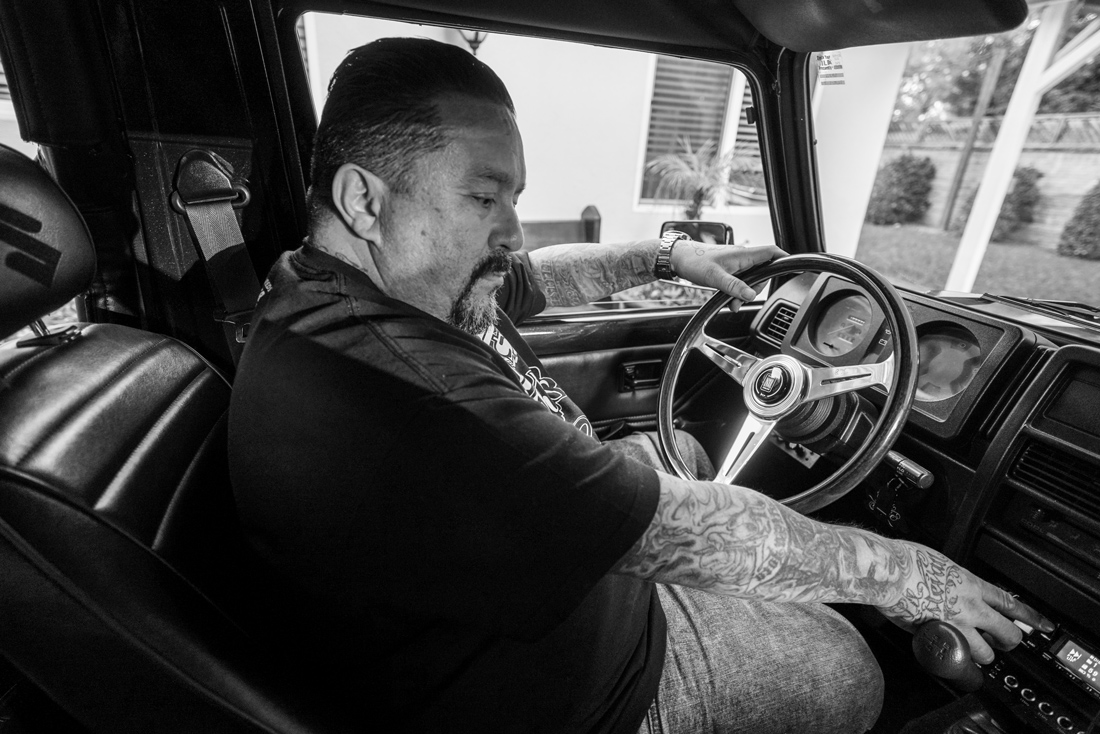
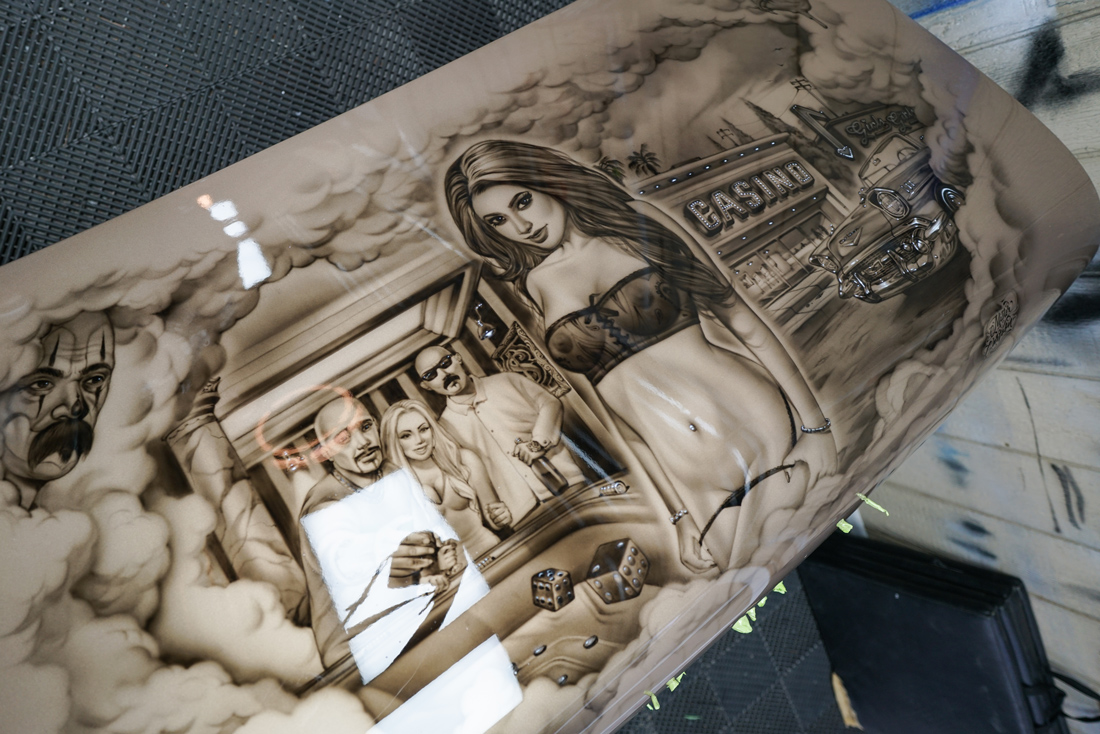
It took talent and connections, but Mister Cartoon attributes much of his success in the hip-hop space with his ability to hang in different circles, and walk the nuance of sovereign subcultures: “My look was a mix of cholo, old school, black and gray fine-line mixed with graffiti, hip-hop. So, I would do a clown head the whole side of someone’s fucking bicep. Normally, the clown head would be that big [gestures to a size of a poker chip] because we’re doing it with the homemade prison machine. I blew that shit up 10 times bigger. I listened to hip-hop. I was a b-boy. I got it. The good tattooers, they didn’t go into those circles. To get a tattoo, there was no way, you couldn’t go on Instagram and be like, ‘Oh, I’m going to shop for my artists who expresses my individual style.’ It wasn’t like that. You had fucking limited shit and I would go to those hip-hop circles. I would go to those underground clubs. I would be around, you know, recording studios and I’d just place myself up in the mix. And you got to be aggressive to get yours. And I love hip-hop. So, when I got an opportunity to tattoo Big Boi from Outkast or Pharrell or one of these guys that I was already listening to them on the radio, you know, I was down. I knew the fucking words to their songs. So, when it came down to do like 50 [Cent]’s back and do Eminem’s tattoos... After I tattooed Eminem, I didn’t need a portfolio anymore because he was going nuts being on the cover of every magazine.”
One of the most interesting things about Mister Cartoon to me is how he evades definition. Although many people understand him as a black-and-grey tattoo artist and hip-hop icon, there’s an entire different subset of players who watch him for his graffiti. Mister Cartoon’s name holds weight amongst custom lowrider aficionados. Yet, diehard streetwear heads would point to his work with Joker or Nike and Vans collaborations. Kids these days want to be a bit of everything, but Mister Cartoon actually did it. He was a multi-hyphenate before social media allowed you to portray yourself however you wanted to be seen. For him, it was a pure and organic lifestyle.
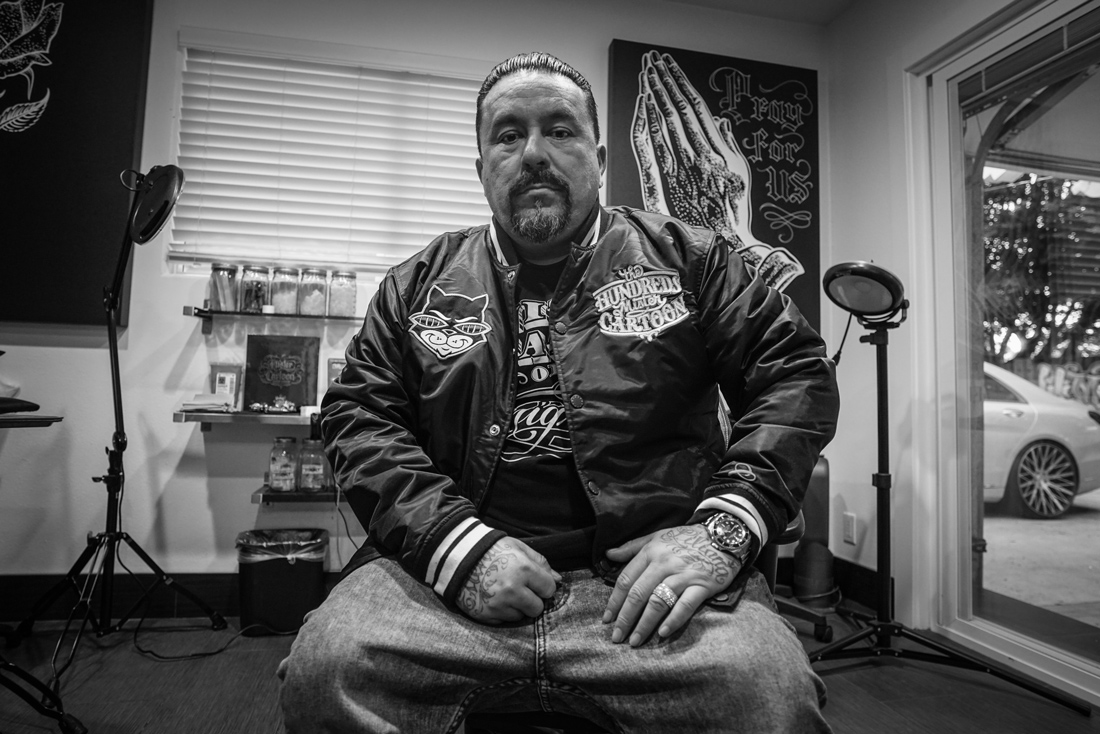
Mister Cartoon was a multi-hyphenate before social media allowed you to portray yourself however you wanted to be seen. For him, it was a pure and organic lifestyle.
“First, I’m in lowrider culture, which has its own rules and regulations,” he says, breaking down his multiple identity disorder. “At the same time, I’m in graffiti culture. The graffiti guys don’t know the lowrider guys. So, I’d bring my homeboys to the tracks and they would like punk the graff writers and take their paint. And I’d be like, oh man. I like both of these guys, but I can’t bring the homies around the graff writers, who are more creative. They’re more like laid back and not trying to gangbang and shit. So, I definitely leaned towards graff writing on shit like that. But, I loved the art and the beauty of lowriding. So, being around the tattoo shops, now I’m in another world with other rules. These guys I knew that were old school graff writers were starting to get sleeved up. And I was like oh shit. This is the most hardcore that art has to offer. Getting tattooed is the final lowbrow frontier. Graff is pretty lowdown, dirty. But a graff writer covered in tattoos is the shit. So, I just got stuck there, man, and I would love to hang out in tattoo shops, backyard tattoo shops, someone’s kitchen or garage or a professional tattoo shop. You know one that smells of green soap, that flash on the wall, all that kind of like took over for me... Tattoo culture would end up taking over everything.”tz
Over the last couple decades, Mister Cartoon has transcended tattoo culture to become a godfather of sorts. He operates on his own schedule, by appointment only. He’s watched his black-and-grey genre of tattooing evolve from being an underground ID to ubiquitous fashion choice. “Before, black and gray lowriding tattoos were in the prison system. We were in a garage. We were in a fucking motel somewhere in the hood. Now this shit is fucking international, in Europe.”
In asking him about the modern state of the culture and how tattoos have gone mainstream, I inquire about the new school. He calls out Nico Furtado and Carlos Torres as the frontline of fine-line artists. Yet, Toons also laments the loss of ritual and heritage within the tattoo practice. “There’s a bunch of other kids that I can name. You’ll see them on IG. They’re kicking ass and they’re keeping this shit alive. The thing I think they’re missing out probably is that old school tattoo life. Like, I came up with an old school guy named Baby Ray. Baby Ray knew the fucking traditions of tattooing. Jack Rudy and Freddy Negrete, these guys, they know the traditions of real tattoo shops. ‘You do this, you don’t do this.’ And I think with all these new tattoo shops popping up, they can do some amazing looking tattoos but they’re missing out on the hardcore tattoo life.”
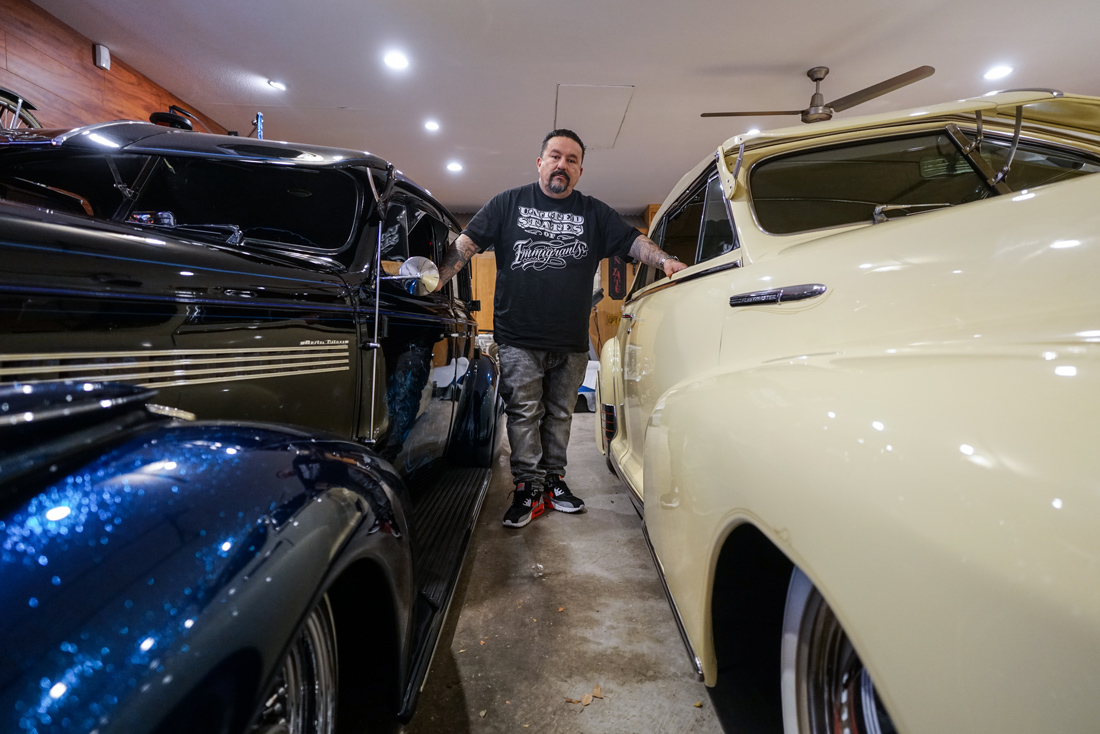
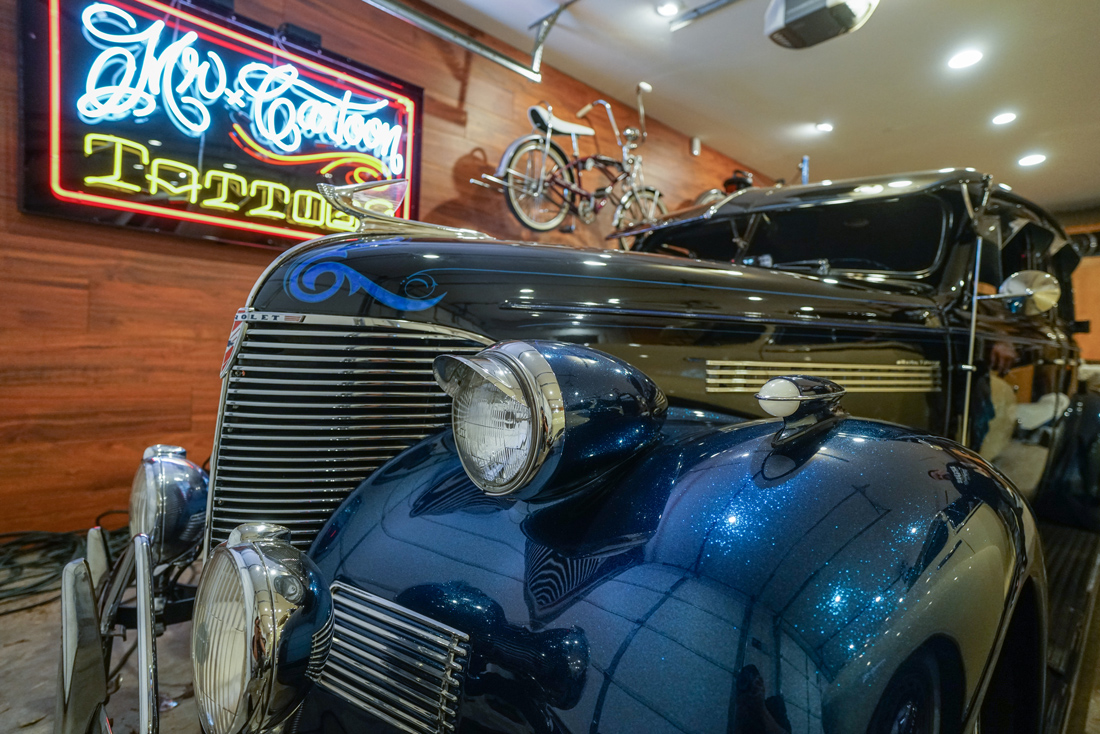
Mister Cartoon is far from being the street culture curmudgeon, but educating the youth on forgotten historical points seems to motivate him most these days. He spends much of his time now speaking to schools and unmoored teens, sharing how he capitalized on his art to make a global brand. Later in the afternoon, he takes me out to his candied-out Suzuki Sidekick and bumps classic rap as we chill in the driveway. Soul music of his era is critical to not only Toon’s work, but his overall life (“That music is the soundtrack to my art. Soul music is essential. It’s what I listen to when I paint.”). He rifles through some familiar early hip-hop tracks, and then a slew of others I’ve never heard before. Everything sounds good and relevant as ever through his speakers.
“Before, black and gray lowriding tattoos were in the prison system. We were in a garage. We were in a fucking motel somewhere in the hood.”
“Doing this collab with The Hundreds man, it’s like I’m able to slide a lot of that shit in there and that’s why it’s important that we do this interview so these kids know the science behind that artwork. So, they see that ’59 El Camino on there with the cat eyes, they’re going to be like, ‘Oh shit.’”
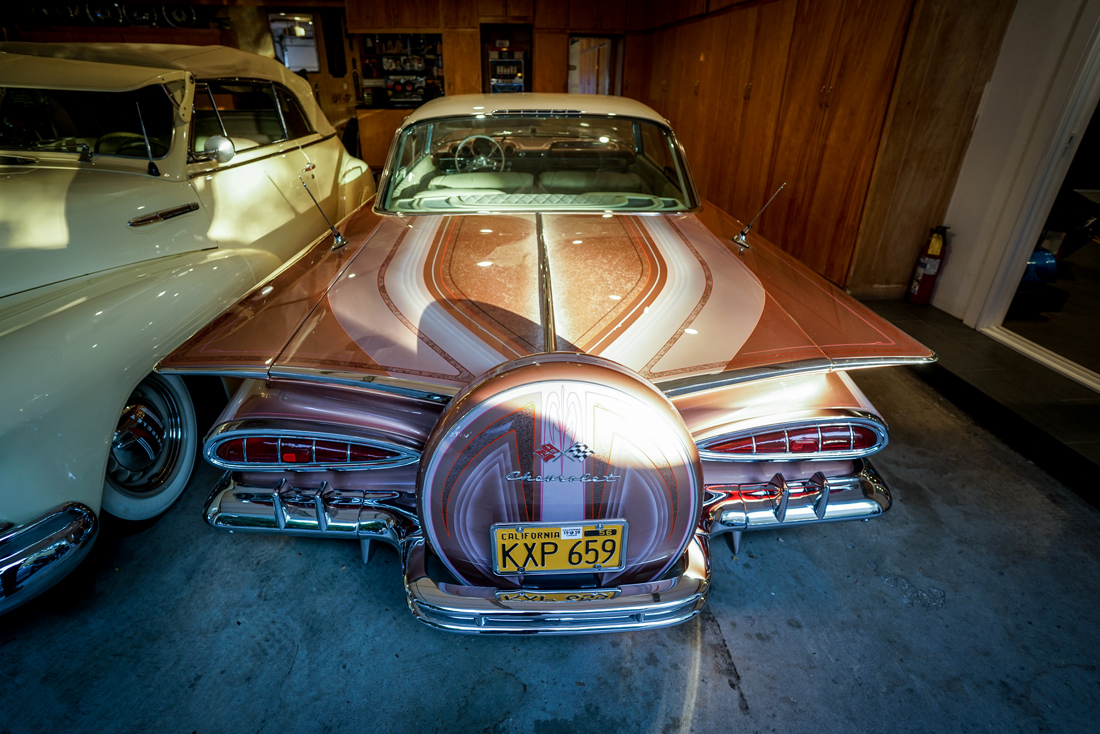
This brings us to the culmination of this relationship and conversation. My brand, The Hundreds, is finally getting to work on an extensive collaboration project with my favorite tattoo artist, Mister Cartoon. The first time we worked together was a decade ago, when Toons drew a portrait on my arm. This week, we present a collection of flannel button-ups, raw denim, graphic T-shirts, and even a vinyl toy figure—a cartoon cat named Bronson—that we designed together.
“I love it. Fucking love this shit. I do it in my sleep. I do it in my dreams.”
“Those rear tail light lenses are the cat’s eyes. You know because we always called it ‘Cat Eyes’ when we see those. So, this was a little character that I had made up a couple years ago and I named him Bronson after one of my homeboys that had passed that owned a paint shop. And this cat hangs around in body shops and listens to the fucking owner bullshit the customer that they’re going to finish the paint job in two weeks, which is actually two years. So, he’s the fly on the wall.” Toons stops and tries on our jacket. He snaps the buttons up the front and runs his hands over the slick nylon. “When I did the other designs, I thought about what we wore. So, you know, in 1988 I had a Starter jacket on. I had a fucking Raiders Starter jacket on and that was the shit if you had that.”
He then adds a remark that makes me feel pretty good and brings everything full circle for me and this special project: “I’m very choosy on my collabs. Only fuck with, like, certain people and shit. If people only knew how much shit I turned down, you know... You got to be choosy. You got to be choosy and just fuck with the people that you already rock this shit and you already support this shit you know.”
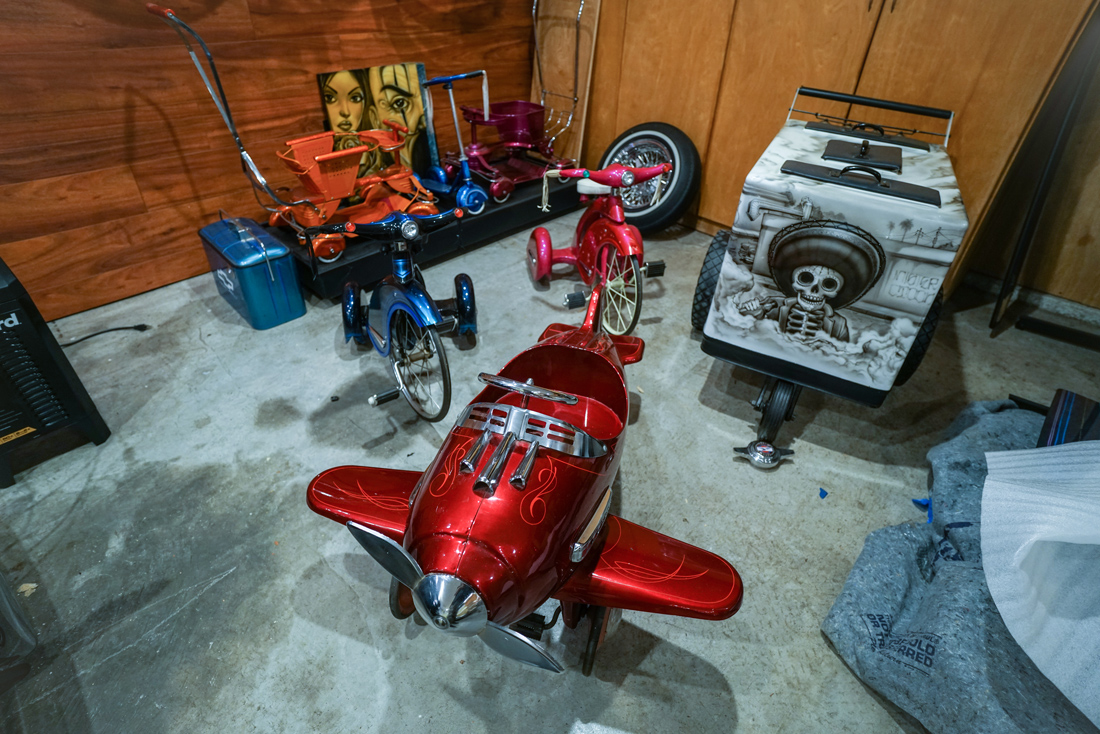
His phone lights up. Toon’s wife is calling and he decides the interview is over and it’s time to see what his children are doing. Again, it’s hard to reconcile this image I have of Mister Cartoon in my head with Mark Machado the dad, the husband, and the faithful son. But, maybe therein lies the lesson, that with some men, duality can fan out like a hand of cards and still make sense altogether in a single deck.
“I’m in a different place I was when I was in my 20s, going crazy. Draggin’ bumper on my ’67. Still, lowrider just as hard, but you know, no DUIs in my future. I love it. Fucking love this shit. I do it in my sleep. I do it in my dreams. It’s oozing out of my fucking ears. I bomb throw-ups when I’m in Europe and Asia, fucking New York. Everywhere but LA (Motherfuckers would love to arrest me here and shit!). But I don’t know. I just want to hang out with my kids.”
***

